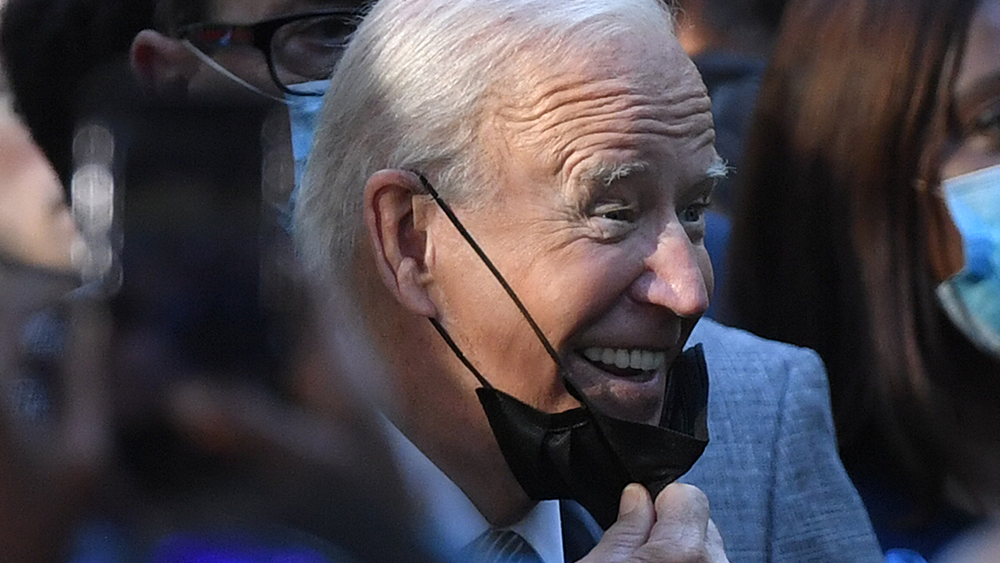Shipping costs to the US surge as supply chain crisis continues to accelerate
10/22/2021 / By Mary Villareal

The price to ship a container from Asia to California is now $17,000, far from its $3,800 price from a year ago. Rates are even steeper on the East Coast, where shipping rates reach up to $20,000 per container.
This increase in shipping rates is primarily due to supply chain disruptions, which have created congestion in seaports and massive issues for trucking companies and even warehouses. This week, 100 ships were reported to be anchored off the coast of California while waiting for their turn to dock and unload containers.
The delay in unloading containers at ports has also delayed the return of ships to Asia to collect the next shipment, which further backlogs ports in Asia and slows down the flow of goods in the United States.
The shock in the supply side of shipping has been connected with the demand side. The demand for commodities has increased, thanks to the economic recovery that started in the second half of 2020.
The expenditures for furniture and household equipment in the U.S. increased by 28 percent, while motor vehicles and parts increased by 31 percent to compensate for the drop in expenditures for recreation, food and beverages and accommodations. The swap from services to manufacturing goods created a significant shock to the container shipping industry, especially considering its efforts to carry the goods across the globe.
Sea transportation also gets more expensive because of the risks and irregularities that add complications to the supply chain. For instance, the huge congestion in the Suez Canal in March cost $6.7 million for every minute of postponement.
The problems don’t stop at cargo services, either. The large number of containers piled at American docks is in part due to the low supply of truck drivers as the American Trucking Association is now short 80,000 drivers, a record high.
Moreover, the association conveyed that the current demand for truck drivers is 30 percent higher than before the start of the pandemic. However, even if there were enough truck drivers to move containers from seaports, available warehouses are also becoming more expensive and rare, which drives up costs even further for consumers. (Related: Supply chain disruptions lead to shortages and soaring prices.)
Biden asks private companies, ports to increase operation hours
President Joe Biden responded to the supply chain crisis by asking some ports to extend their operational hours. The change will see the Port of Los Angeles add more than 60 hours of operations a week.
He also enlisted the help of major retailers and freight movers to take the goods from ships to factories. However, many endpoint destinations are closed during the night, which means that truckers are still unable to deliver the containers until the morning.
With the record high of vessels waiting to dock at unproductive U.S. ports on the West Coast, the queues last as long as two weeks before ships can unload their goods. There is no sign of relief for the situation in the next few months.
Kuehne+Nagel Chief Executive Detlef Trefzger says they expect the supply chain crisis to continue even longer than six or 12 months. All the company could do was recommend that clients agree to drop anchor elsewhere and then fly their products to an onshore hub, or reroute ships as necessary.
Biden’s plan may have also created unintended consequences, such as truckers dropping containers in residential neighborhoods near the seaports.
For example, UCTI Trucking Company, located in Wilmington, California, only has the capacity to hold 65 containers at a time. Because of the limited space, the company is forced to park empty containers along the streets of a nearby neighborhood.
Read more supply chain disruptions and their effects on the global economy at Collapse.news
Sources include:
Tagged Under: big government, Bubble, cargo vessels, Collapse, delivery, delivery trucks, Joe Biden, market crash, package deliveries, products, shipping industry, supply and demand, supply chain, supply delays, supply lines, White House
RECENT NEWS & ARTICLES
COPYRIGHT © 2017 MARKET CRASH NEWS

















